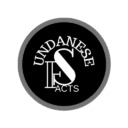Sundanese Aesthetic
Batik Priangan has an interpretation based on Sundanese aesthetics. The Priangan Batik will be related to the identity aspect in its aesthetics. If batik is examined in relation to aesthetic values based on local cultural values and the lives of its supporting communities, one can certainly explore Sundanese local wisdom from the treasures of Priangan Batik.
The term batik in modern Sundanese is equivalent to the term “euyeuk” in ancient Sundanese. The introduction of the term according to Suryani, et al. (in Sunarya, et al., 2012, p. 122) is based on written text sources in the form of Sundanese manuscripts and Sundanese inscriptions written in Tatar Sunda (West Java) in the 11th to 18th centuries AD. Suryalaga (in Sunarya, et al., 2012, p. 122) explains that “euyeuk” means the best value, the value contained in objects in the form of motifs that reflect creativity.

Local Wisdom and the Owners’ Identity
The label local wisdom should be interpreted as wisdom in the traditional culture of ethnic groups. The word “wisdom” itself should also be understood in its broadest sense, i.e. not only in the form of cultural norms and values, but also all elements of ideas, including those with implications for technology, health care, and aesthetics; in addition to proverbs and all other linguistic expressions, as well as various patterns of action and material cultural products. Thus it can be concluded that “local wisdom” is all cultural heritage, both tangible and intangible. All cultural products of a (tribal) nation are a manifestation of its owner’s identity.
Priangan Batik and the Ins and Outs of Embroidery
Besides being related to local wisdom, Priangan Batik is also related to the intricacies of batik as a logical consequence of intercultural contact in the realm of art. “Art” in this case according to Rohidi (in Sunarya, et al., 2012, p. 124) is understood as “a functionally and psychologically integrated part of culture supported by a particular society”.
Every society, consciously or unconsciously, develops art as a form of expression and expression of taste, wrapped aesthetically, harmonized with the views, aspirations, needs, and ideas that live in their society.
Overview of Priangan
The name Priangan, of course, cannot be separated from the name Sunda and West Java. Edi S. Ekadjati explains that the terms Sunda and West Java have now entered the life of Indonesian society which refers to the notion and culture, ethnicity, geography, government administration, and social (Ekadjati in Sunarya, et al., 2012, p. 124). Priangan includes Cianjur, Bandung, Sumedang, Limbangan (Garut), Sukapura (Tasikmalaya), Galuh (Ciamis). Edi S. Ekadjati further explains that Priangan, pa-rahyang-an, para-hyang-an, Rahyang, hyang is synonymous with god; the prefix pa- and suffix -an, denotes a place.
Problems of Priangan Batik and the Efforts to Answer Them
The problem of Priangan Batik is related to several important aspects. First, it needs to prove the existence of Sundanese aesthetic concept in Priangan Batik. Secondly, there should be an aesthetic reflection of the cultural identity of the Priangan people in Priangan Batik, which is an integral part of the Sundanese identity.
Furthermore, the cultural influences that enter the batik world have a significant impact on the decoration, theme, color, composition, technique, naming, and characteristics of batik production areas. This results in Priangan Batik that has been influenced by various cultures, so that sometimes its originality is reduced.
However, it should be emphasized that in this context, the attention is more on the geographical-political aspect, not on the Sundanese major culture. Priangan Batik refers to Garut Batik, Tasik Batik, Sumedang Batik, and Ciamis Batik. The design and aesthetic elements associated with batik include geometric and non-geometric decorative patterns.
Reference:
As a reliable source of information, this article draws on a variety of references from both books and academic journals. These sources provide well-researched and credible insights, ensuring that the content presented is accurate and supported by established scholarly materials.
Here are the references from the article above.
- Sunarya, Y. Y., et al. (2012). Aspek Visual Budaya Sunda dan Esai-esai Lainnya Mengenai Kebudayaan Sunda. Bandung: Yayasan Pusat Studi Sunda.
Read More: Priangan Batik in a Sundanese Aesthetic







